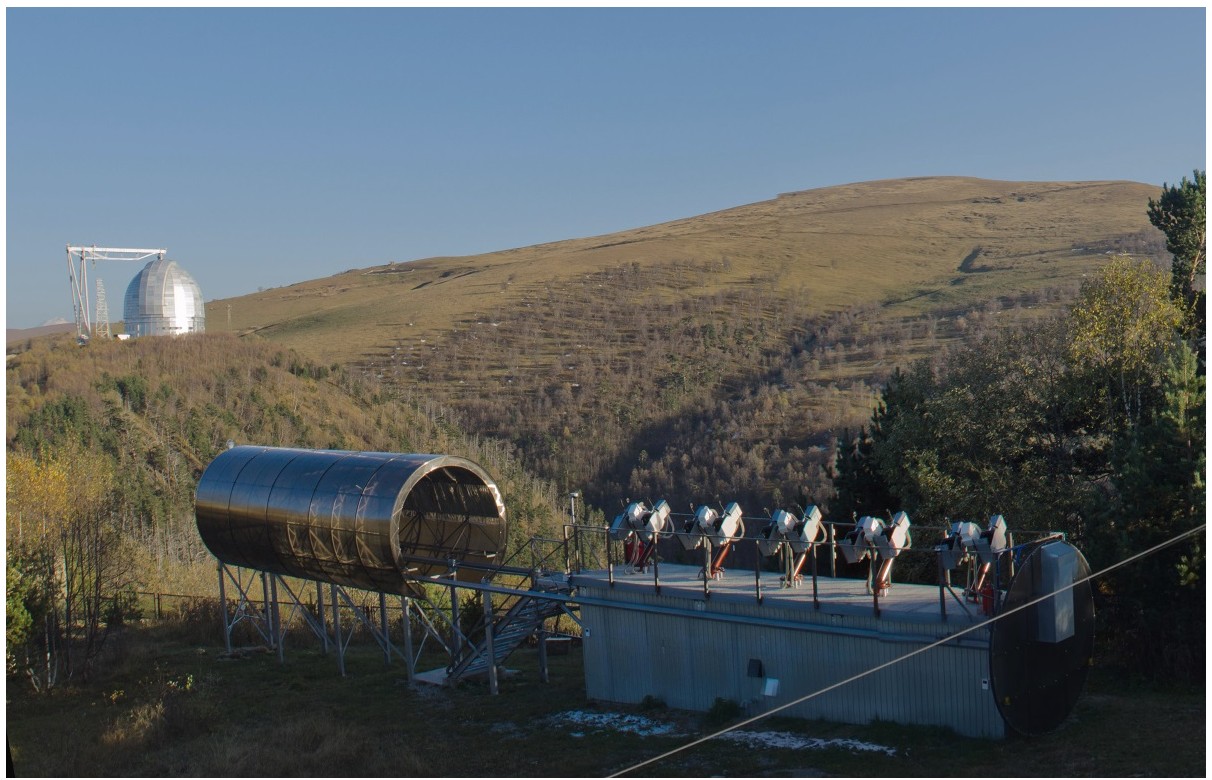The nightlife of the sky or in search of Perseid
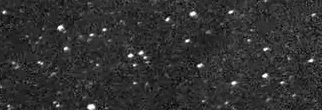 Every year Perseids indulge the inhabitants of the Earth with a beautiful sight (for the patient), and every year we have a desire to somehow capture this moment. Since this year the weather did not spoil us, we had to leave and start observing in advance. What came of it - read below ...
Every year Perseids indulge the inhabitants of the Earth with a beautiful sight (for the patient), and every year we have a desire to somehow capture this moment. Since this year the weather did not spoil us, we had to leave and start observing in advance. What came of it - read below ...Immediately, we note below there will be few Perseids, but we managed to photograph something that we ourselves found interesting: the real stormy life of the night sky, and it turned out to be far from boring.
Attention! Further in the article there will be quite large gif-animations of 3-5 MB!
So, this year we had some advantage, we developed and successfully tested the ultra-sensitive camera VC400 (Neva400) , according to the measurement results, this camera has the following characteristics:
')
- resolution: 2000x2000
- size of photosensitive element: 1010 microns
- quantum efficiency: 95%
- read noise: 2 electrons
- dark current (at 25'C): 25 electron per second
All these parameters suggest a good opportunity to catch meteors. The only problem is the optics. It’s not so easy to find a good fish-ay that would cover the entire sensor, we used the following optics: Samyang 8mm f / 3.5 AS IF MC Fish-eye
- focal: 8mm
- aperture ratio: 1: 3.5
- viewing angle approximately: 140150 degrees
The lens did not completely cover the sensor of the camera, but it could be for the better, the quality of the lens is very mediocre, it “washed” bright objects even in the center.
The camera with the lens was fixed on the mount with a clockwork (unfortunately there is no photo, because it was ... dark).
The shooting was carried out near Veliky Novgorod (hello white nights) from August 10 to 11, on the shore of Lake Ilmen, the sky is not perfect, on the horizon it is highlighted by the city and the village.
The exposure was chosen 2 seconds, the shooting lasted 3 hours and 15 minutes, the total number of frames was about 6000, the permeability of an individual frame was 8sv. The resulting video is accelerated 60 times.
But we were somewhat surprised by the result, the night sky turned out to be full of “life”, we had not been able to achieve such an effect when shooting time-lapses, but, as they say, it’s better to see once than hear a hundred times.
video double-clicked on youtube:
frame processing is minimal: a dark frame is subtracted and the levels are twisted (for sophisticated readers) a direct link to a once compressed video and scaled to 1080p resolution (500 MBytes):
→ Link to a large file here (for readers with a thick Internet) direct link to a compressed video with minimal loss in the original resolution of 1440p (1.9GB):
→ Link to a very large file here.
Since we unexpectedly saw more than expected, we had to try to identify at least the most interesting elements (errors in identification are possible, because there is little experience in this, and there is no data on some group objects in the well-known reference book).
So: a pair of satellites (as it turned out - these are third-generation reconnaissance satellites NOSS):
NOSS-3-8 A & B
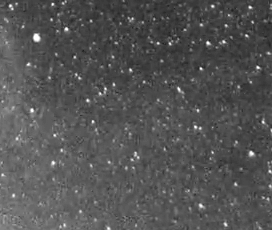
NOSS-3-3 A & B

NOSS-3-7 A & B
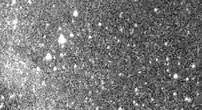
Interestingly enough, two bright objects, which fly almost synchronously, came across - these are the third stages of the Cyclone-3 rocket. They are considered very dangerous objects (such levels 127), "chasing" for satellites ( habr.com/post/386427 ):
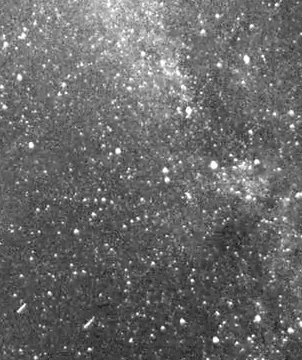
An interesting object with a variable luster was already out of order DMSP-5D1
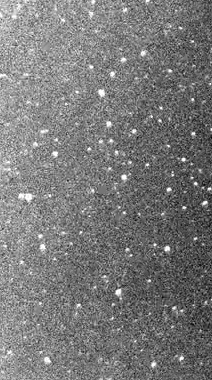
Three satellites:
It was possible to determine only one of the triples - the Chinese YAOGAN 9A 9B 9C:

about devices NOSS
For triangular UFOs, glare from the Naval Ocean Surveillance system, the US naval intelligence system, can be taken. They move in groups (often in three subsatellites) at a distance of 30 to 240 km from each other, and eyewitnesses usually describe them as "moving constellations between which other stars are visible." Flashes occur in the same way when the reflections of sunlight. Systems of the first and second generation (three subsatellites) existed in orbit until 2012. Third-generation satellites (two subsatellites each) were first launched on September 8, 2001. However, this does not mean that now in the sky you can not see the system of three subsatellites. In early 2010, China launched the first NOSS-like triplet, which was almost identical to the orbital inclination and height of the US NOSS.
about devices Yaogan
Yaogan-9 type spacecraft are launched in groups of three satellites on one launch vehicle. After launching, spacecraft build a characteristic orbital order: two satellites from each triple move in one orbital plane one after another at a distance of about 120 kilometers, and the third group spacecraft moves in a similar orbit, but displaced in longitude of the ascending node by about 1 °. in such a construction, at the intersection of the equator, three spacecraft line up in a practically equilateral triangle with mutual distances of 120 ... 150 kilometers. When moving over the latitudes 63 ° of the northern and southern hemispheres of the Earth, the “triangle” degenerates into a “line”, while the third (“lateral”) spacecraft is approximately midway between the other two, at a distance of about 60 ... 70 kilometers from each of them.
about the MMT meteor detection system
The location of the MMT system is the North Caucasus, the settlement of Nizhny Arkhyz. The geographical coordinates of the item are 43 ° 38'59.5 "N. 41 ° 25'53.3 "E, height above sea level 2030 meters. The field of view of one optical channel is 80 square meters. degrees (10 ° x 8 °), the general field of view of the MMT system is 700 square meters. degrees The time resolution of the system is 0.1 s (10 frames per second), while the minimum brilliance of the detected object is 12th magnitude. The limit of penetration on fast moving objects is about 9.5 ... 10.0 stars. led:
In terms of functionality, the camera showed itself to be somewhat similar to the MMT system, which, unfortunately, we are not familiar with and did not know about the article.
Unfortunately, we are not real astronomers, but only radio engineers. Maybe these frames are something ordinary, but they seemed to us at least interesting, which we decided to share.
A little explanation
Alexey's opinion, why we did it a little differently than usual: “Usually timelaps are taken at shutter speeds of tens of seconds, while the satellites are smeared into tracks and“ drown ”in the background noise. The shutter speed is selected so that the Milky Way is visible, and the fisheye lens is a dark lens. In our case, the shutter speeds are short and the signal (satellite) / noise (sky) ratio is higher. The camera has high integrated quantum efficiency and no color filters. ”
In conclusion, I would like to note that since we planned to photograph not what happened, the shooting modes are not optimal. We believe that it is possible to get a result a little better, but, unfortunately, we have a rarity (1-2 per month). If there are any recommendations on how best to organize the shooting, or maybe something special to remove - we will be happy to comment.
We also hope that the whole array will be able to process Perseid itself for the search, but so far, how to get rid of the satellites is not very clear. If something interesting turns out - we will publish. Maybe someone will be able to prompt the program to detect meteors in the frame - we will be very grateful.
Many thanks to Vera and Lesha, who, despite all weather and organizational conditions, got on a taxi with bulky equipment on a windy sandy beach, were able to photograph interesting shots and carry out processing.
Many thanks to the organization NPK Photonics for providing a sensitive camera and permission to publish materials.
ps: when using these materials reference to the article is required.
[upd]: Habrovchanin @AndrewS , did an excellent job of processing the source data and was able to identify meteors, for which he thanks a lot!
the result of his work can be found in the article "Nightlife in the sky or in search of Perseid - treatment"
Source: https://habr.com/ru/post/419981/
All Articles
